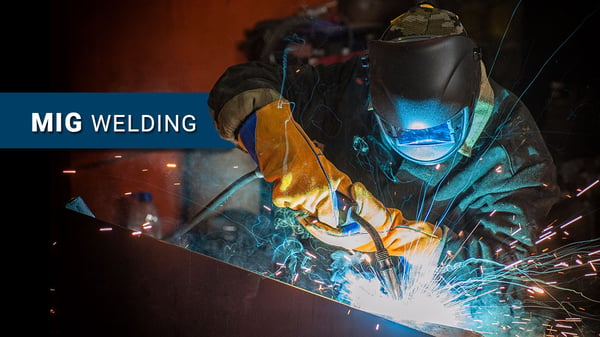What's the Difference Between MIG and TIG Welding?
Central Wire products fulfill the specific, filler needs of many technical processes, including shielded metal arc welding (SMAW), submerged arc welding (SAW), tungsten inert gas welding (GTAG), flux-cored arc welding (FCAW), and gas metal arc welding (GMAW). These processes each have their unique benefits and and require varying levels of training and expertise to master. Two of the most common forms of welding are MIG welding and TIG welding, which can be used in a wide range of applications across almost every industry. Here are some of the differences between the two.
The term MIG is short for Metal Inert Gas, often referred to as Gas Metal Arc Welding (GMAW) by professionals. MIG welding is a highly versatile process that can be used on a variety of different metals with relative ease. Though the process still involves a high level of precision and skill, MIG welding is often considered easier to master than other types of welding, largely due to the stop trigger spool gun that provides significant control.
MIG welding is achieved by feeding a continuous line of filler welding wire though the spool gun at a designated speed. This sends electrodes to the material surface, creating an arc that becomes hot enough to melt two metals together. In addition to expelling electrodes, the gun also emits a shielding gas that protects the weld from atmospheric gases such as nitrogen that can cause deficiencies in the final bond.

The term TIG is often referred to as Gas Tungsten Arc Welding by professionals. TIG welding is ideal for thinner metals, such as aluminum, because the welds are less robust than those created by MIG welders. Considered to be one of the most challenging forms of welding, this highly detailed process takes precision and coordination to execute properly. Because many beginners start with MIG welding, TIG welding is usually mastered over the course of many years.
Instead of using a spool gun, TIG welding relies on a single non-consumable tungsten electrode that heats to very high temperatures and creates an arc. Like MIG welding, a shielding gas encases the weld to prevent deficiencies in the final product. What makes TIG welding so challenging is that users are required to operate the torch with one hand, and a dab filler rod against the metal surface with their other hand. Users must also use one of their feet to throttle a pedal that controls heat input. This multi-step balance takes patience, balance, and dexterity, especially because every movement becomes visible in the weld texture.
Though TIG welding has a steeper learning curve than MIG welding, experienced professions typically agree that TIG welding provides more control, especially over curves and unusual shaped joints. Conversely, MIG welding is a faster process that is ideal for more continuous operations. Ultimately, when deciding whether to MIG or TIG weld a surface, the choice depends on the type and thickness of material, and level of operator skill.
To stock up on TIG and MIG welding consumables for your next project, visit the welding wire page on our website. There you will find data sheets associated with our 39 different stainless, nickel, and copper Gen4 products, and a link to our free welding wire catalog. To submit a quote, visit https://centralwire.co.uk/contact/.
